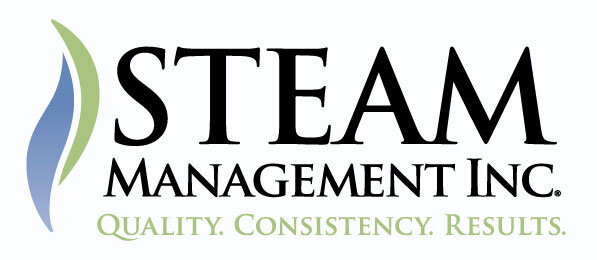Case Study
Steam System Repairs Provide Energy Savings and Improved Reliability at Morgan State University
SMI Impact
Piping and equipment insulation upgrades yielded annual savings of approximately 4,000 MMBtu per year resulting in first year savings of $86,770
Steam trap improvements yielded annual savings of approximately 6,000 Mlbs per year resulting in first year savings of $40,490
The upgrades reduced energy loss, improved safety, and enhanced the reliability and efficiency of the university's steam system
Customer
An ESCO engaged with Steam Management, Inc. (SMI) as a trusted partner to design a steam system optimization scope of work for Morgan State University, a public university in Baltimore, Maryland, with a campus spanning 143 acres and comprising 58 buildings. SMI provided steam trap and insulation upgrades for Morgan State University, resulting in significant energy savings and improved operational efficiency.
The university's campus heating system faced multiple challenges due to the system's equipment nearing the end of its useful life. The piping was in poor condition, exhibiting visible signs of corrosion, leaks, and failing insulation leading to an immediate need for piping repairs, as 38% of steam was being lost due to deteriorating steam and condensate lines. The campus also had a high failure rate among its steam traps.
Background
The existing campus heating system originates at the Central Heating Plant Building. The plant consists of four 600 HP dual fuel natural gas and fuel oil firetube steam boilers. The plant also includes a chemical treatment system, deaerator (DA), surge tank, feedwater and transfer pumps, condensate polishers, blowdown separator, blowdown heat exchanger, centralized controls, steam meters, and natural gas meters. The existing surge tank receives the condensate returned from the distribution system. The DA receives the condensate from the surge tanks and mixes it with makeup water, as necessary. There are two condensate transfer pumps that feed the deaerator and two feedwater pumps that provide make-up water to each boiler. Both the condensate transfer and deaerator pumps are located beneath the respective equipment.
Most of the major Central Steam Plant equipment was installed in 2004 with an expected useful equipment life of 30 years or less. This equipment, including the chemical feed tanks, water and softener are currently beyond the end of their useful life while the boilers and deaerator tank are approaching the end of their useful life.
The distribution system connects to 23 buildings on campus at approximately 100 pound per square inch (psi) steam pressure. As it enters each building, the steam pressure is reduced through a PRV station to create low pressure steam. This low-pressure steam is then used by heat exchangers to create hot water for the building’s heating system and in some cases domestic hot water. Both the low- and high-pressure steam is condensed, collected in a condensate receiver, and pumped back to the surge tank at the Central Plant through the piping distribution system. The steam is used for heating, domestic hot water, reheat, and humidification.
Steam from the Central Steam Plant is distributed to the buildings through an underground piping distribution system consisting of direct buried piping and piping in walkable tunnels. The piping in the tunnels was generally in good condition with no visible leaks. The direct buried piping, where visible, was typically in poor condition, with visible signs of corrosion, leaks and failing insulation. The majority of the manholes were installed between 2006 to 2010 and were observed with steam plumes emitting from the manhole. Underground manhole deterioration is typical for this type of system, due to groundwater penetration into manholes and concrete chloride content from winter road treatment.
Pressure Reducing Valve (PRV) stations exist in all of the buildings utilizing steam with the purpose of reducing high pressure steam (100 psi) to a lower pressure (15 psi) which is then used by the steam heating equipment within the buildings. The majority of PRV stations are operational but are approaching their useful life expectancy.
SMI conducted an investment grade steam system survey encompassing distribution piping, pressure reducing stations, heat exchangers, condensate collection and return systems, steam traps and insulation. Proposed recommendations included new or retro commissioning equipment for all surveyed system components. Surveys were conducted using ultrasound, thermal imaging, and visual observations to test and analyze the equipment and steam trap operations. This collaborative project between Morgan State University, the ESCO, and SMI not only addressed immediate maintenance needs but also established a foundation for future energy efficiency improvements and cost savings on campus.
Steam Trapping and Vacuum Breakers:
Many traps were either incorrectly piped, draining condensate to atmosphere, installed improperly or misapplied for the service or pressure rating of the steam system. Heating coils such as heat exchangers and air handlers have existing check valves installed backwards to act as a vacuum breaker. Although a backward check valve will allow air to pass into the coil during vacuum conditions, scale will build up on the seating surface resulting in steam leakage during steam load conditions.
SMI recommended installing 227 steam traps and 19 vacuum breakers across 22 buildings with failed or misapplied traps being repaired or replaced.
Pipe and Equipment Insulation:
SMI conducted a campus-wide survey of steam and condensate distribution systems including all piping and equipment. The recommendations including installing fiberglass w/ ASJ on bare and degraded steam and condensate piping, and installing Removable Insulation Covers (RIC)s on uninsulated gate valves, control valves, pressure reducing valves, strainers, valve bonnets and flanges.
Recommended scopes included installing 1,294 linear feet of fiberglass ASJ and 611 fittings with PVC covers of various sizes on uninsulated steam and condensate piping. In addition to insulation bare piping or piping with degraded insulation, SMI recommended installing 256 RICs on uninsulated steam and condensate valves, bonnets, flanges, and strainers. RICs are recommended for serviceable equipment such as PRV’s, strainers, control valves, and isolation valves equal to or greater than 2” in diameter in most cases. All insulation conformed to existing thicknesses and specifications.
Solution
Proposed Additional Recommendations
Option 1: Continuous Steam Trap Monitoring and Repair.
SMI Recommended a continuous steam trap monitoring system on all steam traps in operation. Included in the recommendation was the repair of steam traps identified as failed or leaking on a quarterly basis. Continuous monitoring systems provide actionable data for a proactive approach to identifying and completing repairs in a timely manner.
Option 2: Heat Exchanger Upgrades
The survey included the inspection of 28 HEX stations in 21 buildings. The proposal included installing 14 new heat exchangers for equipment that was past its useful life and performing RCx to 14 existing systems as needed for optimal performance.
Option 3: Pressure Reducing Valve Station Upgrades
The survey included the inspection of 24 PRV stations in 22 buildings. The proposal included installing 13 new PRVs for equipment that was past its useful life and performing RCx to 11 existing systems as needed for optimal performance.
Option 4: Condensate Return System Upgrades
The survey included the inspection of 21 CRU stations in 21 buildings. The proposal included installing 16 new CRU tank and Pump sets for equipment that was past its useful life and performing RCx to 5 existing systems as needed for optimal performance.
Schedule an Assessment of Your Facility
info@steammgt.com
1-800-731-0131








